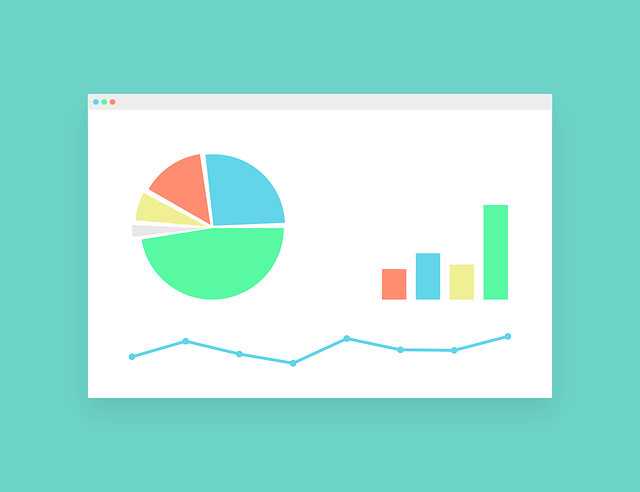Terpene Profile Charts offer a visual guide to the unique aromatic and potential therapeutic properties of cannabis strains or products. These charts detail specific terpenes, their concentrations, and descriptive aroma profiles, demystifying complex chemical data. By understanding terpene varieties, users can make informed choices based on desired outcomes, such as relaxation, mood enhancement, or improved focus. Terpene profiling is crucial in cultivation, aromatherapy, and personalized healthcare, with advancements like gas chromatography-mass spectrometry (GC-MS) and artificial intelligence (AI) revolutionizing analysis and product development.
“Unravel the intricate world of terpenes with our comprehensive guide to terpene profile charts. Understanding these chemical compounds is key to navigating the diverse cannabis and essential oil industries. Learn how a terpene profile chart deciphers the unique characteristics of a product, from aroma to potential therapeutic effects.
Explore various terpene types, their interactions, and how they contribute to distinct experiences. Discover the art of crafting tailored profiles and stay ahead with insights into future trends in terpene profiling.”
Understanding Terpene Profiles: The Basics

Understanding terpene profiles is essential in appreciating the complex world of cannabis and its various strains. Terpenes are aromatic compounds that not only contribute to the distinct smell and taste of different cannabis varieties but also play a crucial role in their potential therapeutic effects. They interact with cannabinoids, like THC and CBD, to create unique combinations that can influence how an individual experiences each strain.
A Terpene Profile Chart is a valuable tool for both cannabis enthusiasts and medical professionals. This chart provides a visual representation of the specific terpenes found in various strains, along with their approximate concentrations. By referencing such charts, users can gain insights into the aroma, flavor, and potential benefits associated with different terpene profiles. For instance, myrcene is known for its earthy and musky notes, while linalool offers a calming lavender-like scent, each evoking distinct sensory experiences and potentially offering targeted relief for specific needs.
Components of a Terpene Profile Chart

A Terpene Profile Chart is a comprehensive visual representation that breaks down the unique blend of terpenes present in a specific cannabis strain or product. These charts are essential tools for both scientists and consumers, offering a detailed glimpse into the aromatic and potential therapeutic properties of a given sample. The chart typically includes several key components:
1. Terpene Identification: Each terpene is identified with a unique name or code, allowing easy reference and comparison. This section lists all the individual terpenes detected, providing their chemical structures and common names.
2. Quantitative Analysis: Here, you’ll find the relative percentages of each terpene present in the sample. This data gives an indication of the dominant terpenes and helps consumers understand the balance of aromas and potential effects.
3. Aromatic Profile: A textual description or color-coded representation of the overall scent or aroma profile is often included. It may highlight prominent notes, such as citrusy, fruity, floral, spicy, or earthy characteristics, aiding in consumer understanding without requiring complex chemical knowledge.
Interpreting Data: What Does It Mean?

Interpreting data from a Terpene Profile Chart is a fascinating journey into the chemical makeup of cannabis or other plants. This chart provides a detailed glimpse into the complex world of terpenes, which are aromatic compounds that contribute to the unique scent and flavor profiles we experience. Each terpene has its own distinct character; for example, myrcene is known for its earthy and musky notes, while limonene offers a refreshing citrus aroma.
When analyzing the chart, look for patterns and concentrations of different terpenes. Higher levels of specific terpenes can indicate dominant traits in the plant’s scent and potential effects on users. This data empowers consumers to make informed choices, especially when seeking certain therapeutic benefits or desired sensory experiences.
Types of Terpenes and Their Effects

Terpenes, often referred to as the ‘aromatic compounds’ of plants, are responsible for the unique scents and flavors we associate with various cannabis strains. They also play a significant role in their effects on the human body and mind. A Terpene Profile Chart can offer a comprehensive overview of these chemical compounds present in different strains, allowing users to make informed choices based on desired outcomes.
Each terpene has distinct properties that contribute to the overall experience. For example, myrcene is known for its earthy, musky scent and is often linked to feelings of relaxation and sleepiness. Limonene, with its citrusy aroma, can uplift mood and enhance cognitive function. Pinene possesses a pine-like fragrance and is associated with promoting focus and memory retention. Understanding these terpene varieties and their effects enables consumers to curate their cannabis experiences based on specific preferences and desired therapeutic benefits.
Crafting Unique Profiles for Desired Outcomes

Crafting unique profiles is essential when aiming for desired outcomes, especially in fields like cannabis cultivation or aromatherapy where terpene profiles play a pivotal role. Terpenes, aromatic compounds produced by plants, significantly influence the flavor, aroma, and potential therapeutic effects of various products. A Terpene Profile Chart serves as a powerful tool to visualize and understand these complex interactions.
By analyzing and customizing terpene profiles, cultivators and aromatherapists can create tailored experiences. For instance, a chart might reveal that myrcene, known for its earthy and fruity notes, often complements linalool’s floral and calming properties in cannabis strains. This knowledge enables professionals to craft specific profiles for different purposes, be it promoting relaxation or enhancing focus, thereby enhancing the overall user experience.
Future Trends in Terpene Profiling

The future of terpene profiling looks promising, driven by advancements in analytical techniques and a growing interest in personalized healthcare. As research continues to unearth the complex interplay between terpenes and human biology, sophisticated instruments like gas chromatography-mass spectrometry (GC-MS) will play a pivotal role in identifying and quantifying these volatile compounds with unprecedented accuracy. This will enable the creation of detailed terpene profile charts that can offer valuable insights into plant genetics, cultivation conditions, and even potential therapeutic applications.
Additionally, the integration of artificial intelligence (AI) and machine learning algorithms promises to revolutionize terpene analysis. By leveraging large datasets, AI models can predict terpene profiles based on various factors, streamline data interpretation, and uncover intricate relationships between specific terpenes and desired plant characteristics or medicinal properties. This not only enhances efficiency but also opens doors to innovative product development in industries ranging from pharmaceuticals to aromatherapy.
